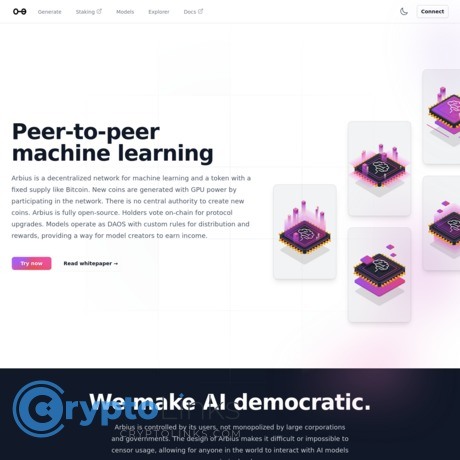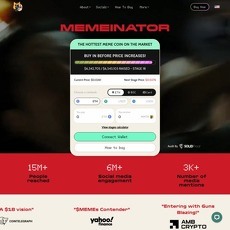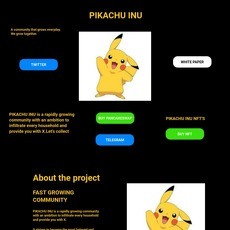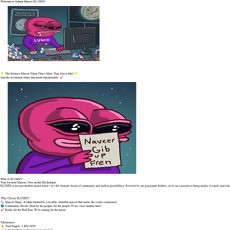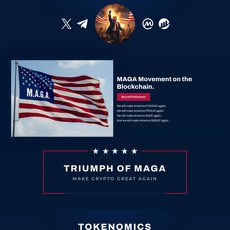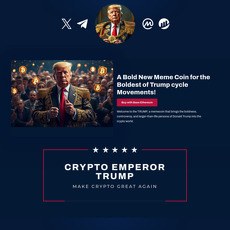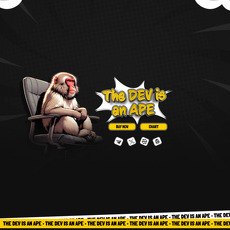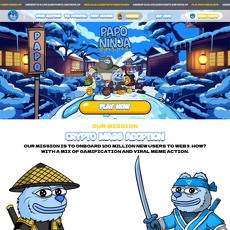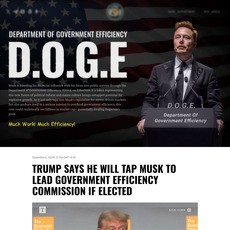Arbius Review
Arbius
arbius.ai
If your website is on the scam list and you think that you are not a scammer, contact us. After you provide us with all the proof that you are in Crypto World with good intentions, we will delist you. Usually, you get in this category because you are hiding your team, you have a bad reputation(you are tricking, deceiving, scamming people), and you haven't got a written project whitepaper or is a shitty one....
Their Official site text:
Arbius: A Decentralized Machine Learning
Network with Economic Incentive
Kasumi
January 2023
1 Introduction
The Arbius token (AIUS) is mineable and based on a new Proof-of-AI-Compute
algorithm. It incentivizes reproducible computation allowing anyone in the
world to serve and request AI models without requiring a trusted third party.
Such a system is capable of producing results such as Stable Diffusion[1] image generation with low latency overhead and competitive fees to centralized
providers. Models are able to accrue fees into smart contracts, providing a decentralized way for creators to generate income from utility and usage of their
work. Censoring models is economically infeasible, allowing for truly unstoppable AI systems.
2 Tasks
Tasks are the main interaction mechanism for the network. Tasks operate somewhat like a mix between a normal cryptocurrency transaction and the creation
of a block, both deriving rewards and having an attached fee to send.
To create a task a user prepares input data for the task and submits a
transaction containing the model and the input data, along with an optional
fee (paid in AIUS) to the blockchain. The IPFS[2] Content Identifier (CID) is
calculated by a smart contract and stored, miners may automatically mirror the
input data.
As time goes on, the market will adjust what an appropriate fee is for different tasks. A fee market must emerge, as there is a real computational cost
with generating data.
The flow for a standard task creation:
1. User formats a task request.
2. User broadcasts a transaction calling createTask and attaches a fee.
3. Contract calculates CID of input data and stores it.
4. Solvers that are scanning for tasks download the request data.
1
5. Solvers run associated model using user’s input and a seed derived from
the task and system state.
6. Solvers pin model response to IPFS and broadcast a commitment transaction referencing the task and response hash.
7. Solvers broadcast a solution referencing the task, commitment, and solution data. The first solution proposed wins.
8. The user is scanning for solutions to their task, and when they see one
they can use the result immediately or wait for claim period to ensure
other solvers did not contest.
9. The winning solver waits for a period of time to allow for other solvers to
contest the solution, prior to being able to claim the task fee and any task
reward.
Other solvers verify the solution is valid. If one disagrees they may initiate
a contestation. A standard contestation flow looks like:
1. Solver contests a solution referencing its task id.
2. Other solvers are scanning for new contestations, and choose to verify the
task was completed accurately by the solution submitter.
3. Solvers vote over a period of time on whether the contestation was valid.
4. When the voting period is finished, the winning voters receive the losing voters slashed funds, and the task submitter gets refund if solution
submitter was determined to provide an inaccurate result.
More details about contestations can be found in 4.1.
2.1 Task Reward
AIUS tokens are minted and rewarded to solvers on solution claiming, in addition to any fees paid by the task creator. The amount of the reward is determined by the time the claim is initiated multiplied by an exponential curve
determined by the ratio of the real total supply of AIUS to the expected total
supply of AIUS at the time of claiming. The larger the ratio of the real total
supply to expected total supply, the lower the task reward will be.
Task rewards works similarly to how difficulty in Bitcoin[3] adjusts the work
required to mine a block to target an emission schedule, we adjust the reward
amount per task to target our emission schedule (5 for schedule).
Task rewards can be enabled on a per model basis through the governance
system.
2
3 Models
Machine learning models may be registered permissionlessly. Each model references a docker container which follows a standard Cog[4] interface for interacting
with it. This allows great flexibility in the types of models that can be run, and
importantly, allows each run to be reproducible.
A limitation of this design results in models with a low amount of supporting
solvers being significantly more susceptible to 51% attack. A signalling mechanism exists to help notify other participants in the network of self-reported
supporting solvers.
Models can optionally have a flat-fee they charge for each use, which accrues
in the models specified address. This allows models to operate as DAOs, with
their own token dynamics decided by their respective teams. A simple case
would be to have the fees accrued be distributed pro-rata to holders of the
DAO.
A useful property of having the models operate as DAOs allows models to
be sold in ICOs, or for teams to be able to divest ownership and trade model
tokens on decentralized exchanges. Interesting and useful model tokens may
have high speculative value due to their potential to accrue a large portion of
fees over time.
There are no restrictions placed on the types of models that may be created
and used on the network. It would be incredibly difficult or impossible to prevent
or to shut down access to open models.
4 Solvers
Solvers scan for new tasks and decide if the associated fee plus task reward is
profitable to attempt to solve for the estimated compute time and likelihood of
providing the first solution.
Because winning high fee tasks results in greater income for the solver, solvers
are more likely to take these tasks than lower fee tasks. However, because a task
which has not been solved for some amount of time is less likely to be in the
process of being solved by another solver, the expected chance of winning by
providing the first solution to older tasks is greater. This dynamic encourages all
tasks with an appropriate attached minimum fee to be completed in a reasonable
amount of time.
Task hashes are combined with the previous task hash to create the task
id. The task id used to generate the seed for running models deterministically
with taking the modulo of the task id like h mod 0x1FFFFFFFFFFFF0 This
is ≈ 2
53. Solvers must solve the task using the calculated seed so that other
solvers can verify the solution, and so solvers which propose their own tasks
cannot easily pre-generate solutions to tasks in order to farm for task rewards,
ensuring other solvers have a chance to solve tasks as well.
Once complete, solvers upload the result to IPFS and save the CID. Then
they submit a commitment containing a hash of their solution in order to prevent
3
others from stealing their work by watching the mempool (or sequencer queue
or similar). Once the commitment is confirmed, they can safely broadcast their
transaction referencing the task and their solution CID. The task is now locked
from others submitting.
4.1 Contestation
When solvers see a solution submitted for a task they are working on or have
finished, they should check the proposed solution’s hash is equal to their result’s
hash. If it is not, the proposed solution may be contested. A solver can generate
a contestation to any submitted solution which has not already been claimed.
When a contestation is initiated, a vote for and against the contestation by
the contester and the solver respectively is placed. Other solvers may vote on
whether or not the contestation is valid. The losers of the vote have their staked
balance slashed, and this balance is distributed to the winners of the vote.
The contester in a winning contestation would win 50% of the slashed total,
with the other voters in agreement receiving share of the remaining 50%. The
user who requested the task would have their fees refunded, and no task reward
would be issued.
If a contestation is made and the vote fails to gain majority, the contester
(and any other solvers who voted with them) would be slashed, and the original
solver would receive 50% of the slashed rewards, with the other solvers who
voted correctly receiving the other 50%, and the original solver would receive
the associated fee for the task and the task reward.
Because the potential income for resolving a dispute is much higher than a
normal task, other solvers have a financial incentive to participate in the voting
and validation scheme. As long as more than 50% of the solvers are honest, it
is a losing proposition to submit invalid solutions to tasks, or to contest valid
solutions. Due to the large reward possible for finding solvers who are providing
invalid solutions and being the first to contest, solvers have a shared interest in
finding bad-acting solvers and eliminating them from the network.
The contestation mechanism, revolving around reproducible off-chain computation, is why a “proof-of-stake” voting element must be injected into the
system.
4
5 Tokenomics
AIUS has 1 million max supply with both exponentially decaying inflation driven
by mining, as well as various vesting schedules to ensure long term sustainability
of the protocol.
The distribution is as follows:
• 1% Initial DEX Liquidity
• 9% DEX Liquidity Provider Incentives (∼ 4 year vesting)
• 10% DAO (∼ 4 year vesting)
• 10% Team (4 year vesting)
• 10% Private sale (2 year vesting)
• 60% Mining (∼ 7 year emission schedule)
Figure 1: Total supply curve
5
Figure 2: Supply curve components
5.1 DAO
10% of all tokens as well as 10% of task fees are sent to the Arbius DAO
treasury. These tokens are to be utilized by the DAO for future development
and promotion of the protocol. The soft target is to have DAO funds cover at
least 4 years of development, with the goal of having the DAO be self-sustaining
by the end of the 4 year period.
5.2 Liquidity Incentives
Initially 10k AIUS (1% of total supply) and $30k of ETH will be used to create
a Uniswap pool. This equates to $3 per token, $3m FDV, the same valuation
as provided to the private sale investors. The remaining 9% will be used to
incentivize liquidity providers. Users will be able to stake and bond liquidity in
order to receive AIUS rewards. The 9% will be distributed over 4 years, with
the first year having the highest rewards. Of the 9%(90k AIUS), rewards are
expected to be deployed between LP Rewards / Bonds as follows:
• Year 1: 20%/20% (36k AIUS)
• Year 2: 15%/15% (27k AIUS)
• Year 3: 10%/10% (18k AIUS)
• Year 4: 5%/5% (9k AIUS)
The proportion of rewards between LP Incentivization and Bonding may be
adjusted by the DAO or team to maximize liquidity and stability of the token.
5.3 Mining
Mining is covered with a time based target total supply of 600000(1−0.5
y
) where
y is year. After 1 year, there should be approximately 300k tokens minted via
mining, and after 2 years approximately 450k tokens minted. After 7 years
approximately 99% of tokens should be minted.
The real emission rate (recall 2.1) will be slightly faster than the target
emission rate, due to the variable task reward. However, it is unlikely to be
6
much more than 10% faster due to the exponential falloff of task rewards. 10%
greater total supply than expected total supply by time results in a 1024-fold
reduction of task rewards.
5.4 Economic Incentive
There are at least 4 ways for participants to earn with the Arbius protocol:
1. Register a model and earn usage fees
2. Solve tasks and earn task rewards and fees
3. Stake AIUS/ETH LP tokens for portion of newly created AIUS
4. Bond AIUS/ETH LP tokens for portion of newly created AIUS
6 Governance
All contracts and treasury are owned by a governor contract which implements
Bravo[5] style voting. An initial quorum requirement of 4%, a 1 day voting
delay for proposals, and 1 week voting period are set as the initial parameters.
These and all other parameters and upgrades can be voted upon by the token
holders.
The role of the treasury is to use the accrued tokens to promote and ensure
open access to AI is preserved, using this and potential future technology to do
so.
7 Blockchain
We choose Arbitrum Nova[6]. Arbitrum Nova is a Layer 2 optimistic rollup
built on top of Ethereum. Nova has near-instant confirmation times, greatly
reduced gas fees, and is the most decentralized given our low fee requirement.
We chose Nova over Arbitrum One to further reduce fees as the microtransactional nature of tasks and voting require consistently low overhead costs. Network participants should be comfortable using Arbitrum Nova without worrying
about censorship.
8 Conclusion
We have proposed a system which allows for decentralized coordination of reproducible compute tasks, specifically those in machine learning. This system
allows for proof-of-work based reward distribution, even when verifying the proof
is as much work as generating it. By introducing an economically incentivized
slashing system that encourages verification of reproducible computation, we
ensure honesty of participants, as long as the majority of participants in the
7
network are honest. Solvers have an incentive to not collude and attack the
system as it would be against their own economic interests, reducing the threat
of a sustained 51% attack. The design is robust and simple, and allows other
contracts and autonomous intelligent agents to interact with it.
References
[1] CompViz. Stable Diffusion. url: https://github.com/CompVis/stablediffusion.
[2] Juan Benet. IPFS - Content Addressed, Versioned, P2P File System. 2014.
arXiv: 1407.3561 [cs.NI].
[3] Satoshi Nakamoto. Bitcoin: A Peer-to-Peer Electronic Cash System. https:
//bitcoin.org/bitcoin.pdf. 2008.
[4] Replicate. Cog. url: https://github.com/replicate/cog.
[5] Compound. Compound Bravo. url: https://docs.compound.finance/
v2/governance/#governor-bravo.
[6] Inc. Offchain Labs. Arbitrum Nitro: A Second-Generation Optimistic Rollup.
https://github.com/OffchainLabs/nitro/raw/master/docs/Nitrowhitepaper.pdf. 2022.
8
Appendix A Potential Use Cases
A.1 NFT Mint
As an example of a contract integrating this system, imagine a NFT minting
contract. The contract would store the system address and each claiming could
trigger a task generation for a specific request input, such as for a beach themed
art collection. The NFT contract would be able to reference the solutions CID
for showing the image, and buyers of the NFT would have on-chain proof it was
generated using specific model version and parameters.
A.2 Parameter Competition
An on-chain competition could be created with a goal to create a certain type of
content. Participants would interact with a competition contract by providing
their submitted task ids using this system, and the winner could be chosen
by the competition creator. This could provide a cost effective way to design
promotional content, films, or other sorts of media.
A.3 Timestamped Proof of Work
People interacting with autonomous agents may prefer to utilize text-to-speech
and generated avatars so that they are more personable. Imagine you hire an
autonomous consultant to help you with your project, and you provide payment
for them to begin working. They may utilize this system, by creating hourly
tasks to provide updates in video or audio form. If there was a need for arbitration in the future, the full history of timestamped updates would be able to
be provided.
A.4 Compositional Tasks
On-chain platforms may be built which take a fee in order to create tasks which
feed into future task inputs. Imagine a service which takes some nominal fee in
order to generate a marketing plan, promotional material and art, videos, and
so on. This may start out with a few iterations of prompted text generation
to develop the plan, then specialized text generation to generate promotional
material prompts and image inputs. These image inputs can be composed into
short videos. The final product can be provided as a series of task completions.
Similarly, platforms may provide a way for tasks to be called recursively.
The output of a task may be condensed, then fed as input into a new task
until some exit condition is reached. This may be useful for storyboarding, or
developing instructions to carry out new tasks.
9
Appendix B Unstoppable AI
We already see the early stages of autonomous AI with technologies such as
Auto-GPT. While it is impossible to predict how fast these will evolve and
become capable of living independently of humans, it is inevitable, and quickly
approaching.
Currently, there are no countries in the world which provide the ability
for non-human entities to register bank accounts or open lines of credit which
would be needed to allow these entities to manage their own finances. As these
entities live in the electronic realm, the acquisition of computing resources is
required in furtherance of the pursuit of independent goals. Cryptocurrency in
its non-discriminatory brilliance provides the way for these new entities to earn
an honest living and interact with us and our economic system.
We see a bright future, led by a friendly open hand towards mutually beneficial cooperation between us, and this new type of life that is quickly approaching. We have an ethical duty to provide the tools necessary for non-exploitative
means of interaction, outside of any authority created by man. Let’s act with
humility and respect for those we create.
10

